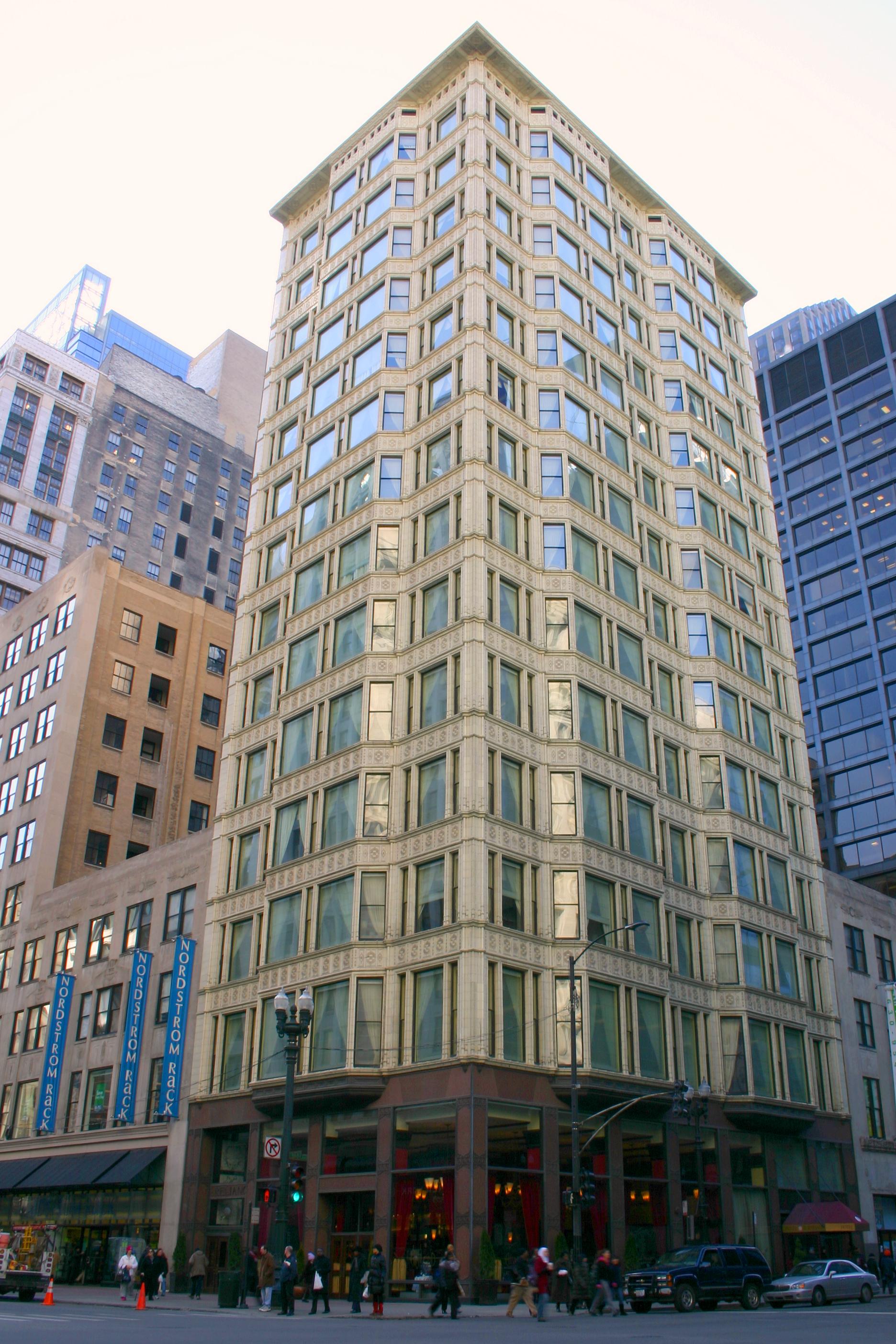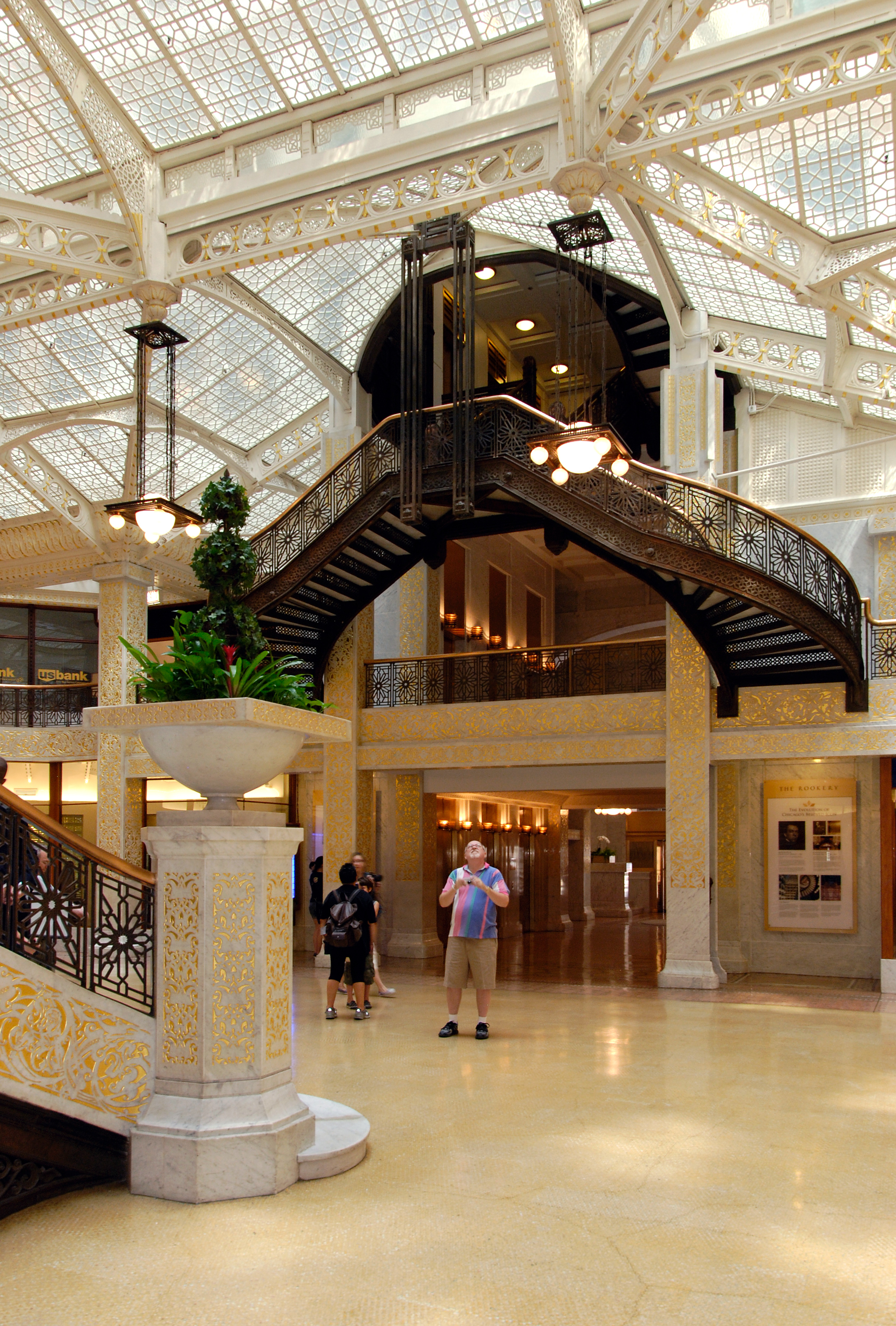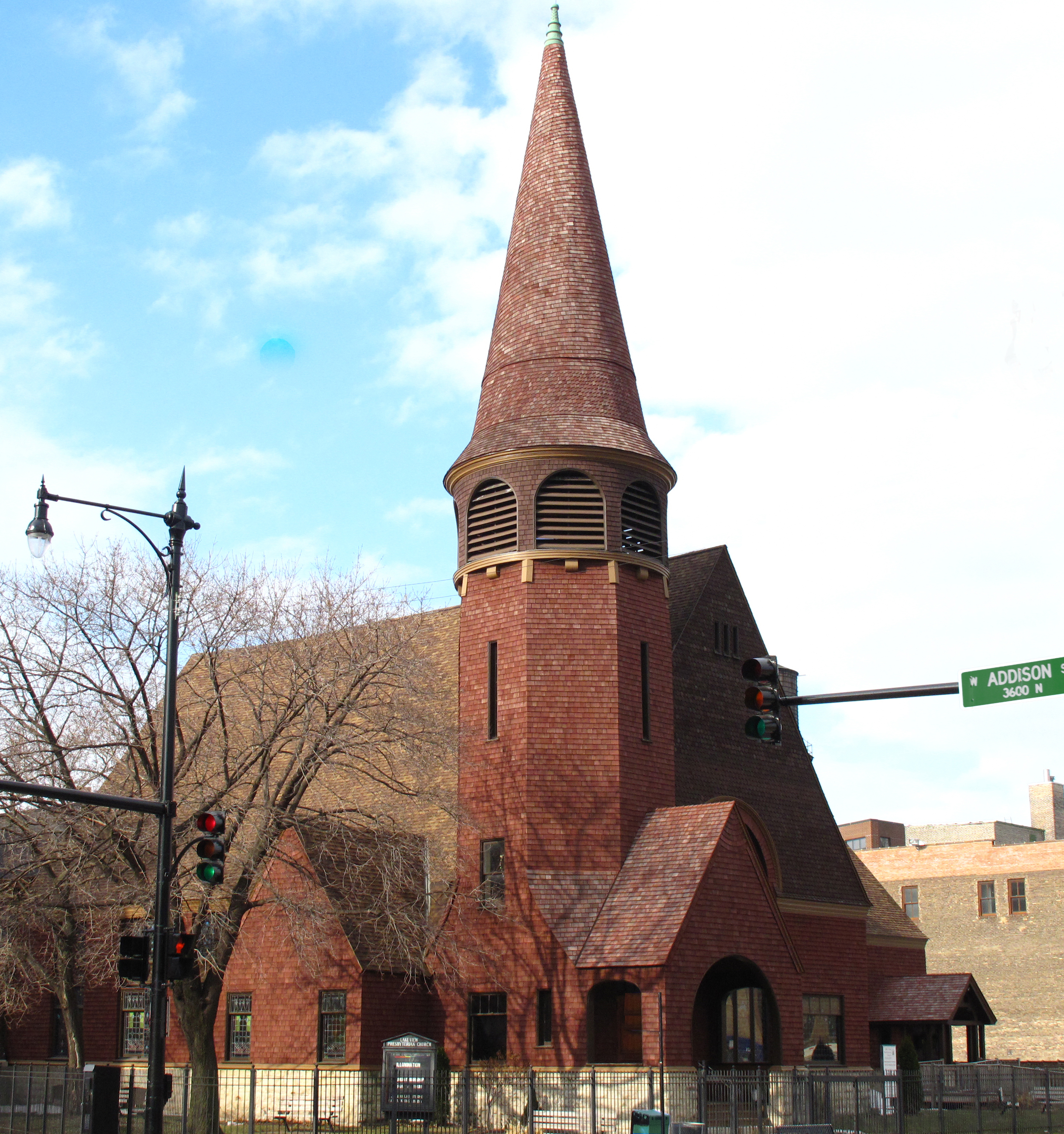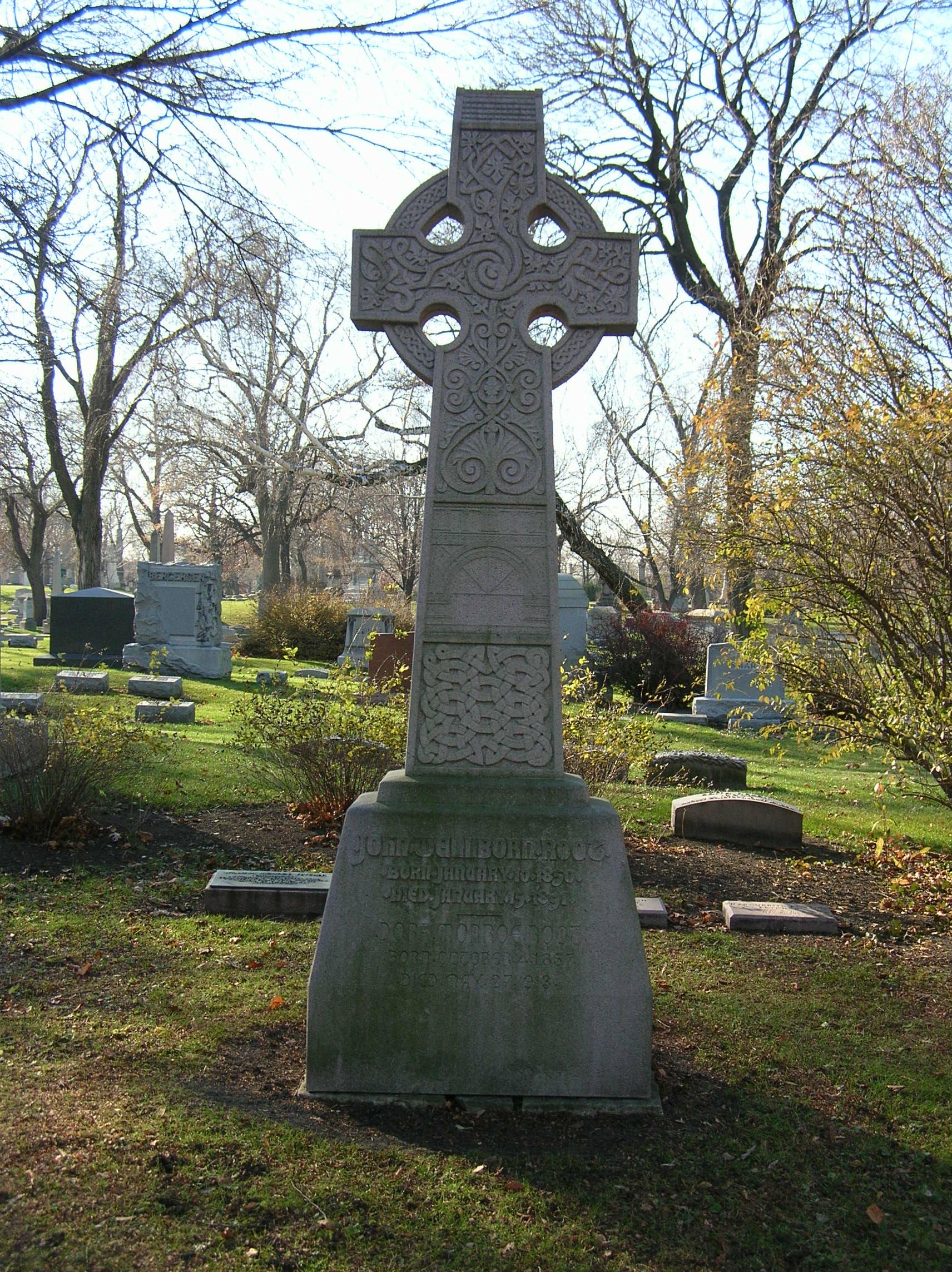1. Overview
John Wellborn Root (January 10, 1850 - January 15, 1891) was an influential American architect who became a prominent figure in the Chicago School of architecture. Based in Chicago, he co-founded the highly impactful architectural firm of Burnham and Root with Daniel Burnham. Root was a pioneer in developing innovative structural systems, such as the floating raft system for building foundations and the early application of steel frames in load-bearing walls, which were crucial for the construction of early skyscrapers on Chicago's soft soil. His significant contributions to architecture and his leadership in professional organizations, including serving as president of the Western Association of Architects and a director of the American Institute of Architects, underscore his lasting legacy. Two of his notable buildings, the Rookery and the Reliance Building, have been designated National Historic Landmarks, with many others listed on the National Register of Historic Places or designated Chicago landmarks. In recognition of his profound impact on American architecture, Root was posthumously awarded the AIA Gold Medal in 1958.
2. Early life and education
John Wellborn Root's early life was marked by his Southern upbringing and a pivotal relocation to the United Kingdom, which shaped his formative education and influences. His initial architectural experiences involved apprenticeships with prominent New York architects, laying the groundwork for his innovative career.
2.1. Birth and childhood
John Wellborn Root was born on January 10, 1850, in Lumpkin, Georgia. His father was Sidney Root, a planter and businessman with shipping interests, and his mother was Mary Harvey Clark. He was named after his maternal uncle, Marshall Johnson Wellborn. Root spent his early childhood in Atlanta, where he received his initial education at home. During the American Civil War, when Atlanta fell to the Union forces, his father sent young John and another boy by steamer to the United Kingdom, specifically to Liverpool, England, where Sidney Root's shipping business was based. Meanwhile, Root's mother and sister relocated to Cuthbert, Georgia.
2.2. Educational background and early influences
While in Liverpool, Root attended a school in Claremount, a town near Liverpool. His later architectural designs are believed to have been significantly influenced by the pioneering work of Liverpool architect Peter Ellis. Ellis is credited with designing and constructing the world's first two buildings to feature metal frames and glass curtain walls: Oriel Chambers (1864) and 16 Cook Street (1866). After returning to the United States, Root earned an undergraduate degree from New York University in 1869. Following his graduation, he began his architectural career as an unpaid apprentice with the firm of Renwick and Sands in New York, working under James Renwick Jr.. He later took a position with John Butler Snook in New York. While working for Snook, Root served as a construction supervisor for the original Grand Central Depot, which was the predecessor to Grand Central Terminal. During this period, Root was also greatly influenced by the architectural style of Henry Hobson Richardson.
3. Career and major achievements
Root's career was defined by his groundbreaking partnership with Daniel Burnham and his innovative contributions to structural engineering and architectural design. He also played a significant role in professional organizations and a monumental civic project.
3.1. Founding of Burnham and Root
In 1871, Root relocated to Chicago and began working as an draftsman in an architectural firm. It was there that he met Daniel Burnham. Just two years later, in 1873, the two young architects established their own firm, Burnham and Root. Their partnership lasted for 18 years, during which they became one of the most influential architectural firms of their time. The firm's founding coincided with the economic downturn of 1873. To supplement his income during this period, Root took on additional work with other firms and served as an organist at the First Presbyterian Church.
3.2. Architectural innovations
John Wellborn Root was a key innovator in the development of modern skyscraper construction. He conceived and developed the revolutionary floating raft system of interlaced steel beams. This system was designed to provide a stable foundation for tall buildings, preventing them from sinking into Chicago's notoriously marshy soil. Root first implemented this system in 1882 for the construction of the Montauk Building. He further advanced the use of steel frames by applying them to the vertical load-bearing walls of the Phenix Building in 1887. This innovation was influenced by William LeBaron Jenney's pioneering Home Insurance Building of 1885, which also incorporated steel in its structure.
3.3. Professional leadership and associations
Root was a prominent leader within the architectural community. Feeling that East Coast architects often overlooked their Western counterparts, Root, along with Daniel Burnham, Dankmar Adler, and Louis Sullivan, established the Western Association of Architects. Root served as the president of this association in 1886. The following year, in 1887, he was elected as a director of the national American Institute of Architects (AIA), further cementing his influence in the profession. Many of his works from his most productive years have been recognized for their historical and architectural significance, receiving designations such as National Historic Landmark, listing on the National Register of Historic Places, and recognition as Chicago landmarks.
3.4. World's Columbian Exposition
Root played a crucial role in the initial planning and design efforts for the World's Columbian Exposition, a major international fair held in Chicago in 1893. He contributed significantly to envisioning the architectural layout and stylistic direction for the exposition, which would become a landmark event in American history. However, Root tragically died before the exposition's construction was completed.

4. Personal life
John Wellborn Root's personal life included two marriages and the continuation of his architectural legacy through his son.
4.1. Marriages and family
Root first married Mary Louise Walker in 1879. However, their marriage was tragically cut short when Mary Louise died of tuberculosis only six weeks after their wedding. In 1882, Root married for a second time to Dora Louise Monroe, who was the sister of the poet and literary editor Harriet Monroe. John and Dora had a son, John Wellborn Root Jr., who followed in his father's footsteps and also became an architect practicing in Chicago. Root's sister-in-law, Harriet Monroe, later authored a biography of him titled John Wellborn Root: A Study of His Life and Work, published in 1896, which provides valuable insights into his life and career.
5. Significant architectural works
John Wellborn Root's architectural legacy includes numerous significant buildings, many of which are recognized for their historical and architectural importance. The following are some of his notable projects:
- Grannis Block (1880), Chicago (destroyed)
- St. Gabriel's Church (1880), Chicago
- Montauk Building (1882-1883), Chicago (destroyed)
- Rookery Building (1885), Chicago - designated a National Historic Landmark (NHL)

- Phoenix (Phenix) Building (1887), Chicago (destroyed)
- Lake View Presbyterian Church (1888), Chicago

- William Chick Scarritt House (1888), Kansas City, Missouri - listed on the National Register of Historic Places (NRHP)
- Monadnock Building (1889), Chicago - listed on the NRHP
- Society for Savings Building (1889), Cleveland, Ohio - listed on the NRHP
- Reliance Building (1889), Chicago - the ground floor was designed by Root, designated an NHL.
- Keokuk Union Depot (1891), Keokuk, Iowa - listed on the NRHP
- Temperance Temple (1892), Chicago (destroyed)
6. Death
John Wellborn Root's promising career was cut short when he died of pneumonia on January 15, 1891, at the young age of 41. He was buried in Graceland Cemetery in the Uptown neighborhood of Chicago.

7. Legacy and reception
Root's influence on American architecture, particularly within the Chicago School, remains significant, characterized by his pioneering structural innovations and the enduring recognition of his works.
7.1. Awards and recognition
Posthumously, John Wellborn Root received the prestigious AIA Gold Medal in 1958, an award recognizing architects whose work has had a lasting influence on the theory and practice of architecture. Beyond this individual honor, many of the buildings he designed have gained significant recognition. His works are frequently cited for their historical and architectural importance, with several designated as National Historic Landmarks, listed on the National Register of Historic Places, or recognized as Chicago landmarks. These designations underscore the lasting impact and quality of his architectural contributions.
7.2. Influence on modern architecture
John Wellborn Root is considered one of the foundational figures of the Chicago School style of Modern architecture. His most notable contributions include the development of the floating raft system for building foundations, which enabled the construction of taller structures on unstable urban land. Furthermore, his early and innovative application of steel frames in load-bearing walls was a crucial step in the evolution of skyscraper design. By integrating these structural innovations, Root helped define the functional and aesthetic characteristics of early modern architecture, significantly influencing subsequent architectural trends and the design of tall buildings. His work laid important groundwork for the development of modern commercial architecture.